A waterproof mattress protector is an important tool in safeguarding your bed and increasing its lifespan. By keeping moisture away from your sleeping area, it helps prevent the growth of mold, the spread of dust mites, and a host of other problems.
After reading our guide you will be able to:
- See how it can extend the life of your mattress
- Confidently choose the best one for your needs
- Realise what a waterproof mattress protector does
- Recognise why one should be applied to a new mattress
- Appreciate the health benefits of waterproofing your bed
- Value the hypoallergenic aspects of waterproof mattress protectors
- Understand how the materials of a waterproof mattress protector work
What Is A Waterproof Mattress Protector?
Whether it be via ‘accidents’ or careless tea drinking in the bedroom, liquid spillage is an unfortunate fact of life for many of us. Profuse sweating in particular can push your mattress to the limits of cleanliness, even if it is built to endure. A good mattress is an expensive investment, and it’s worth doing as much as possible to keep it feeling fresh and new for as long as possible. Although sheets are easily washed, the rest of the bed can be difficult to maintain, and so you’ll want to take as many preventative measures as possible to retain its good condition.
Sometimes called a water-resistant mattress cover, a waterproof mattress protector is the best method for saving your bed from liquid spills and stains, as well as reducing the elements that affect allergy sufferers. Because it can be easily applied to a bed and likewise taken off for washing (many of which can be done in a machine), it’s the ideal solution to dealing with unpleasant or wet particles that can damage a bed, being much easier to clean than the mattress itself.
Acting as a fortress against liquids and other unpleasant grains, it fights away anything that can be absorbed by your mattress that would result in creating marks and the gestation of nasty smells.
Not for the faint hearted, but some of the more gross reasons for adopting a waterproof mattress protector can be explored in a Web MD article about what’s lurking in your mattress.


Waterproof Mattress Protector Material
A water-resistant cover is almost like a miracle sleeping aid for those who suffer from allergies. Mostly made from cotton and polyester, by inhibiting the flow of fluids onto the mattress, waterproof protectors make your bed an unattractive prospect for mold, dust mites and other undesirables which can irritate sleepers.
Of particular benefit to children, who can develop skin and lung related health problems from unclean beds, the materials that go into making protectors are also a great asset to those of all ages finding themselves aggravated by asthma or eczema.
When we consider that some of us might be producing up to a litre of sweat a night, the need for polyester as a primary waterproof mattress protector material becomes evident. Without it, years of perspiration moisture can become locked into a mattress, prematurely making it smell musky and turning it brown. Coupled with the potential health issues, the need to have a protective sheet cling to your bed becomes less of a luxury item, and more of an essential sanitary tool.
Although using the correct waterproof mattress protector material to displace fluids is a vital part of maintaining a clean, healthy sleeping space, it doesn’t negate the need for regular washing of bedding.
Choose The Right Type Of Mattress Cover
There are different types of mattress covers available, each with their own benefits and drawbacks. All-in-one mattress protectors are designed to fit both sides of the mattress and come in various sizes. They are easy to use and all provide protection against dust mites, allergens, and bacteria. However, these mattress protectors tend to be more expensive than traditional mattress covers.
Waterproof ones will always be labelled as such, although they can sometimes go by a variation of the term like ‘water resistant’.
Waterproof Your Bed When Pregnant
There is no better time to apply a waterproof mattress protector to your bed than when it is brand new and can maximise the longevity by keeping it fresh and hygienic from the get-go. If you don’t already have one, then another great time to start using one is during pregnancy. Aside from providing an extra barrier between your bed and any late-night snacks satisfying those cravings, it will also be there for water breaking.
Once your baby is born, it will be a guardian angel watching over your mattress when drool, sick, poop, pee and knocked over tumblers become the norm in your bedroom.


How To Wash A Waterproof Mattress Protector
These covers will bear the brunt of almost any fluid that could possibly damage your mattress, whether you’re dealing with baby mess, are an avid and sweaty exerciser, a make-up obsessed beauty queen, suffering from a particularly heavy flowing menstrual cycle, or an older person struggling with incontinence:
- No yellow marks after urine leakage
- No grey pigments after a hot sweaty night
- No red spots after a heavy menstrual cycle
- No brown coffee stains after drinking in bed
- No orange mattress after a fake tanning session
And they ask for very little in return. Maintaining a waterproof mattress protector is easy. Always double check the manufacturer’s instructions on your particular cover for cleaning guidance, however most can be thrown in a washing machine for 1 hour at high temperatures along with the rest of your bedding. We recommend you do this once every 2 months, but for protectors that are in use on a bed that regularly hosts pets, or is exposed to a high level of liquids, more frequent washing is advised.
Dry on a medium heat.
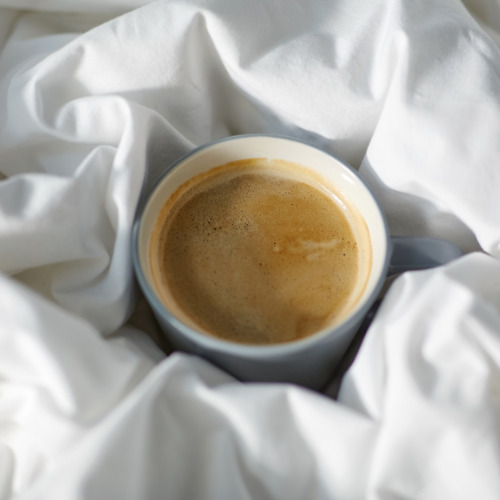

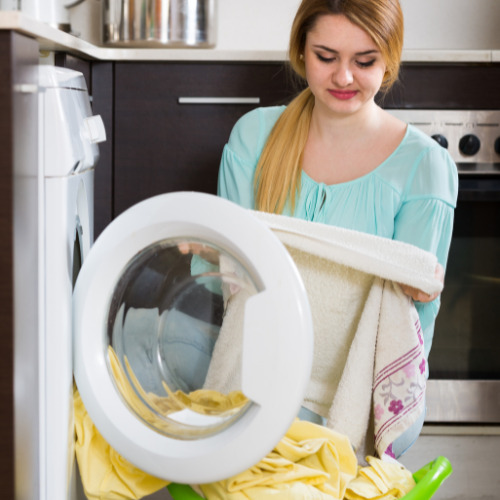
How To Fit A Waterproof Mattress Protector
Protectors come in a variety of sizes, with the following being among the most popular:
- Single Waterproof Mattress Protector
- Waterproof Mattress Protector Double
- King Size Waterproof Mattress Protector
How these are applied to your bed can vary slightly by brand, but the majority of them feature an elasticated skirt that can be pulled over a mattress (and topper, if applicable), and securely wrapped around just like a fitted sheet.
The idea of the protector is that it should be covering everything your body will come into contact with, so any items such as toppers will need to be underneath.
Although they are quite rare, there are some protectors which are an overall encasing, and can be awkward to put on and take off without help.
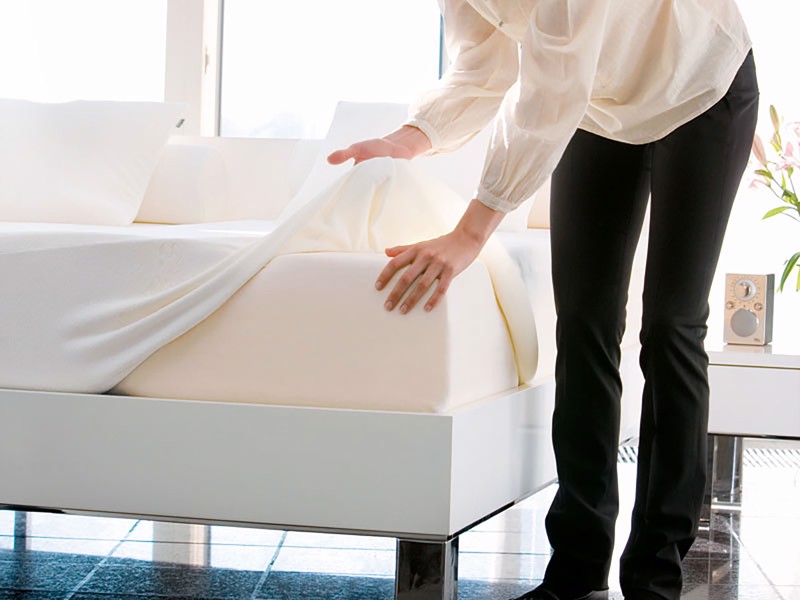
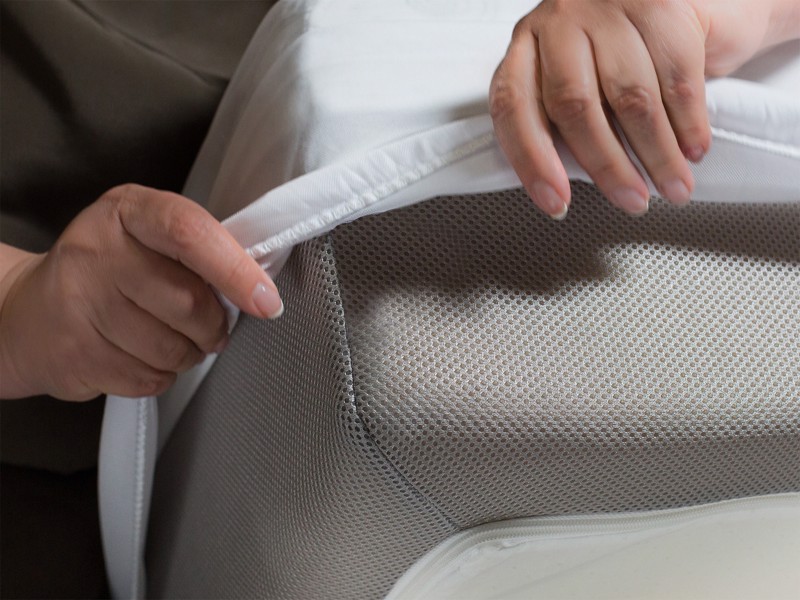
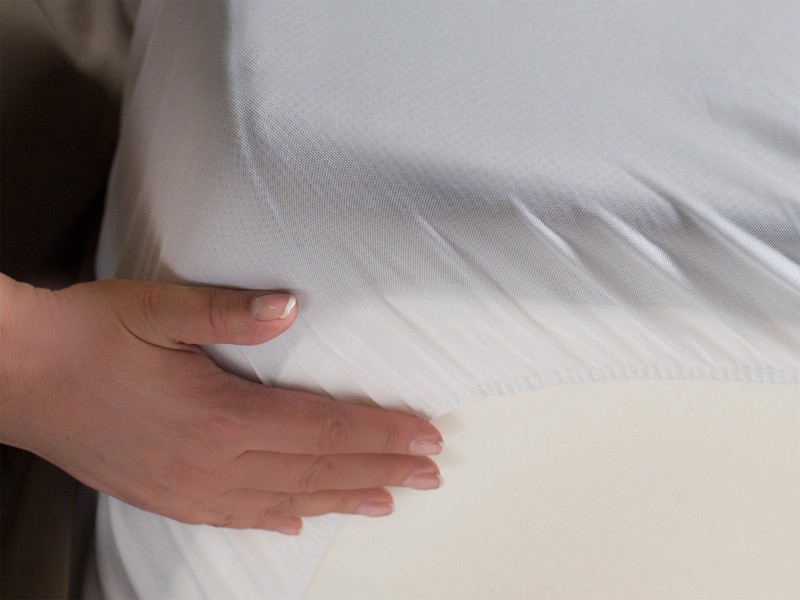
Waterproof Protector VS Mattress Topper
While the main task of a protector is to fend off nastiness, many are also padded for comfort. This should always be viewed as an added feature however, as they are not able to offer much in this way. Instead of relying on a protector for padding, a mattress topper should be laid out underneath the cover. The extra layer will also help prolong the lifespan of your bed by reducing stress on the mattress.
Our guide to mattress toppers will help you take care of any comfort issues you may be experiencing.
Start your journey to finding the right waterproof mattress protector for your bed by browsing the Land of Beds bedding section.
If your interested in prolonging the life of your mattress then you might want to consider some of the tips in our guide to flipping and rotating a mattress.
Found a mattress protector you like? Then turn your attention to some other comfort considerations:
The Ultimate Guide To Picking A Duvet
Revealing The Best Pillows For Back Pain
Need Help Choosing The Best Waterproof Mattress Protector?
Deciding on the best waterproof mattress protector for your needs depends on several factors.
- What allergies are you suffering from?
- What type of ‘accidents’ are you most likely to have?
- What type of fabric would you be most comfortable on?
There is no need to lose sleep over trying to choose the right water-resistant cover for your mattress. Our experts at Land of Beds pride themselves on their specialist knowledge and ability to guide you to the waterproof mattress protector that’s just right for you.
Our customer-first policy means we listen and give good, independent advice based on the needs of the individual. By pairing consumers up with ethically sourced, affordable, quality products, we provide as many people as possible with a great night’s sleep.
If you would like help being connected with a healthy solution to your wet mattress woes, feel free to get in touch with us on 01928 246787 or via the chat box below.
FAQ
Do you need a mattress protector if the mattress is waterproof?
Although technically you might not have to use a mattress protector on a waterproof mattress, the truth is that the ability to easily remove the protector for washing makes maintain the mattress a lot easier, and can prolong it’s fresh feel for longer.
How often should you wash a waterproof mattress protector?
It is recommended that you wash your waterproof mattress protector once every two months, or even more frequently if it has experienced spillages or regular contact with pets.
Is a waterproof mattress pad the same as a mattress protector?
A pad is designed to provide extra comfort, whereas a protector is made to reduce harm to your bed and increase its longevity.

